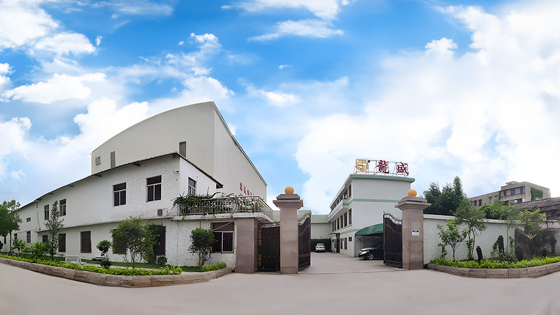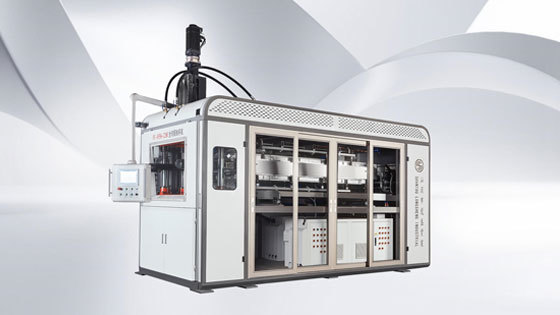Advanced Plastic Thermoforming: Key Trends and Insights for Manufacturers
Time: 2025-08-14 20:20:51.829
Advanced Plastic Thermoforming: Key Trends and Insights for Manufacturers Table of Contents Introduction to Advanced Plastic Thermoforming Understanding the Thermoforming Process Current Industry Trends in Thermoforming Technological Innovations in Thermoforming Sustainability in Thermoforming Practices Challenges Facing Manufacturers in Thermoforming The Future of The
Advanced Plastic Thermoforming: Key Trends and Insights for Manufacturers
Table of Contents
- Introduction to Advanced Plastic Thermoforming
- Understanding the Thermoforming Process
- Current Industry Trends in Thermoforming
- Technological Innovations in Thermoforming
- Sustainability in Thermoforming Practices
- Challenges Facing Manufacturers in Thermoforming
- The Future of Thermoforming Technology
- Conclusion
- Frequently Asked Questions
Introduction to Advanced Plastic Thermoforming
In the evolving landscape of manufacturing, **advanced plastic thermoforming** has emerged as a crucial technique, revolutionizing the way products are designed and produced. As industries demand more versatile and efficient manufacturing processes, thermoforming stands out for its ability to create complex shapes from plastic materials with precision and speed. This article explores the significant trends and insights that are shaping the future of this vital manufacturing process.
Understanding the Thermoforming Process
Thermoforming is a manufacturing process that involves heating plastic sheets until they become pliable and then molding them into desired shapes using various techniques. The process can be broadly categorized into two types: **thermoforming** and **vacuum forming**. While both methods share similarities, vacuum forming is ideal for simpler shapes, whereas advanced thermoforming techniques allow for intricate designs.
Key Steps in the Thermoforming Process
The thermoforming process consists of several key steps:
- Heating: Plastic sheets are heated uniformly to a designated temperature, making them soft and malleable.
- Molding: The heated sheets are then placed over a mold, and pressure is applied to ensure the material conforms to the mold’s contours.
- Cooling: Once the material has taken shape, it is cooled to retain the new form.
- Trimming: Excess material is trimmed away, and the final product is prepared for use.
Current Industry Trends in Thermoforming
The plastic thermoforming industry is undergoing significant changes driven by technological advancements, consumer preferences, and regulatory pressures. Understanding these trends is essential for manufacturers aiming to stay competitive.
1. Increased Demand for Customization
As consumers seek more personalized products, manufacturers are increasingly adopting **custom thermoforming solutions**. This trend emphasizes the need for flexibility in production lines to accommodate unique designs and variations.
2. Integration of Smart Technologies
Manufacturers are increasingly integrating **smart technologies** such as IoT and artificial intelligence into their thermoforming processes. These technologies enhance efficiency, reduce waste, and enable real-time monitoring, leading to improved product quality and reduced operational costs.
3. Focus on Lightweight Materials
With the automotive and aerospace industries pushing for lighter components, the demand for thermoformed lightweight materials such as **thermoplastic composites** is on the rise. These materials provide strength without the added weight, contributing to fuel efficiency and lower emissions.
Technological Innovations in Thermoforming
Technological advancements are at the forefront of the thermoforming industry, making the process more efficient, cost-effective, and versatile. Below are some of the most notable innovations:
1. Advanced Equipment and Machinery
New developments in **thermoforming machinery** have led to faster cycle times and reduced energy consumption. Automated machinery equipped with advanced controls allows manufacturers to optimize production settings with minimal intervention.
2. Enhanced Mold Design Techniques
Modern mold design techniques, including the use of **3D printing**, enable manufacturers to create complex molds rapidly and at a lower cost. This innovation allows for greater creativity in product design and faster prototyping.
3. Simulation Software
Utilizing advanced simulation software helps manufacturers predict how materials will behave during the thermoforming process. This capability allows for better planning, reducing waste and optimizing material usage.
Sustainability in Thermoforming Practices
As environmental concerns become increasingly pressing, sustainability is transforming the plastic thermoforming landscape. Manufacturers are adopting practices that minimize their carbon footprint and promote environmental responsibility.
1. Use of Recyclable Materials
The shift towards using recyclable and biodegradable materials in thermoforming is gaining traction. These materials not only reduce environmental impact but also meet the growing demand for sustainable products from consumers and regulatory bodies.
2. Energy-Efficient Processes
Implementing energy-efficient technologies and machinery in the thermoforming process helps manufacturers reduce energy consumption and lower operational costs. This not only contributes to sustainability goals but also enhances competitiveness in the market.
3. Waste Reduction Strategies
Effective waste management strategies such as material reuse and recycling within the production process are crucial. By optimizing material usage and reducing scrap, manufacturers can significantly lower their waste output, benefitting both the environment and their bottom line.
Challenges Facing Manufacturers in Thermoforming
Despite the advancements in technology and growing market demands, manufacturers face several challenges in the thermoforming landscape.
1. Rising Material Costs
Fluctuations in the prices of raw materials used for thermoforming can impact production costs. Manufacturers must navigate these changes carefully while maintaining profit margins.
2. Regulatory Compliance
Compliance with increasingly stringent regulations on plastic production and waste management poses a significant challenge. Manufacturers must stay informed and adapt their practices to meet these evolving standards.
3. Skill Gaps in Workforce
The rapid adoption of advanced technologies necessitates a workforce skilled in operating sophisticated machinery and implementing new processes. Bridging this skill gap is essential for maximizing productivity and efficiency.
The Future of Thermoforming Technology
The future of advanced plastic thermoforming is bright, with continuous advancements promising to enhance the capabilities of manufacturers. Key areas of focus for the future include:
1. Greater Automation
As automation becomes more prevalent, manufacturers will increasingly adopt robotic systems to streamline the thermoforming process, reduce labor costs, and improve precision.
2. Smart Manufacturing
The integration of smart manufacturing principles, including data analytics and machine learning, will allow manufacturers to optimize operations, predict maintenance needs, and ultimately improve product quality.
3. Collaborative Production Models
The rise of collaborative production models will foster partnerships between manufacturers, suppliers, and technology providers, promoting innovation and efficiency across the supply chain.
Conclusion
In summary, advanced plastic thermoforming is an essential process poised to shape the future of manufacturing. By embracing current trends, technological innovations, and sustainable practices, manufacturers can position themselves to thrive in a rapidly changing landscape. As the industry evolves, staying informed about key developments will be crucial for maintaining a competitive edge and meeting the demands of modern consumers.
Frequently Asked Questions
1. What is advanced plastic thermoforming?
Advanced plastic thermoforming is a manufacturing process that involves heating plastic sheets and molding them into specific shapes using various techniques, allowing for the production of intricate and lightweight products.
2. What industries benefit from thermoforming?
Thermoforming is widely used across various industries, including packaging, automotive, aerospace, and consumer goods, due to its versatility and efficiency in producing customized parts.
3. How does sustainability impact thermoforming practices?
Sustainability in thermoforming is achieved by using recyclable materials, implementing energy-efficient processes, and adopting waste reduction strategies, thereby minimizing the environmental impact of production.
4. What challenges do manufacturers face in thermoforming?
Manufacturers encounter challenges such as rising material costs, regulatory compliance, and skill gaps in the workforce, which can impact production efficiency and profitability.
5. What is the future of thermoforming technology?
The future of thermoforming technology includes greater automation, smart manufacturing principles, and collaborative production models, all aimed at enhancing efficiency and product quality in the industry.
Related News
Advanced Plastic Thermoforming: Key Trends and Insights for Manufacturers
Advanced Plastic Thermoforming: Key Trends and Insights for Manufacturers Table of Contents Introduction to Advanced Plastic Thermoforming Understanding the Thermoforming Process Current Industry Trends in Thermoforming Technological Innovations in Thermoforming Sustainability in Thermoforming Practices Challenges Facing Manufacturers in Thermoforming The Future of The
Quality Multi-Station Thermoforming Machine
A multi-station thermoforming machine is a versatile piece of equipment in the plastic manufacturing industry, designed for high-volume production of complex plastic parts. It features multiple stations that allow for different stages of the forming process to be carried out simultaneously, such as heating, forming, trimming, and cooling.
Contact Us
China Shantou Longsheng Industry Co., Ltd.
Address:No.44 Xigang Road, Shantou, Guangdong, China
Mob: +86-13302710116
Shiela:+86-15362312727
E-mail: longshengmachine@gmail.com



TikTok





